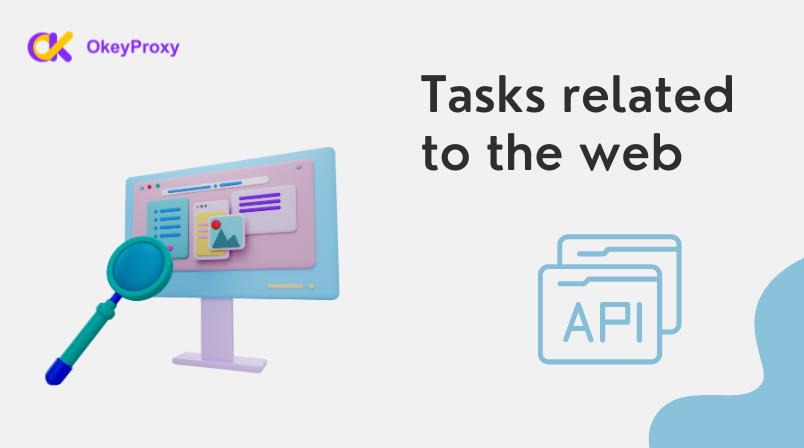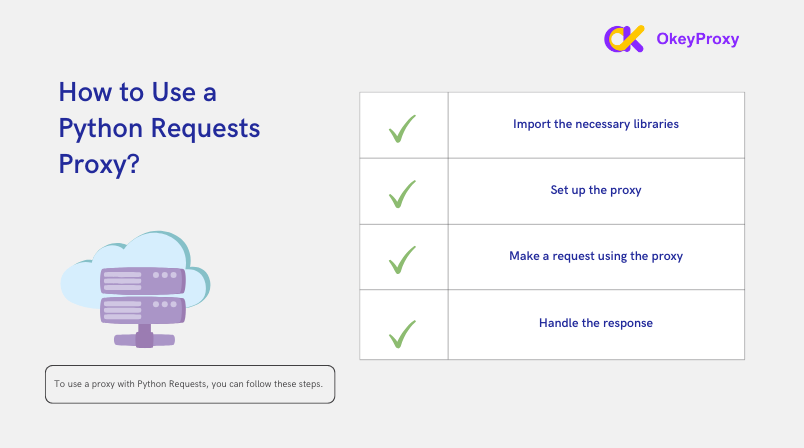Proxies are a crucial aspect of many web-based applications, providing a layer of security and functionality that is indispensable in the modern digital world. In Python, a widely-used high-level programming language, proxies are used extensively in various capacities.
This article is intended to explore the concept of the Python proxy, the benefits of using a Python proxy server, how to install a Python requests proxy, and how to make a proxy server in Python. Find all the essentials about Python proxy you need to know below.
What is a Python Proxy Server?
A proxy pattern implemented in Python: In software design, a proxy pattern involves creating a new class (the proxy) that mimics the interface of another class or resource, but adds some form of control or management functionality. This could be used for lazy loading, logging, access control, or other purposes. Python’s dynamic typing and rich class support make it a good language for implementing proxy patterns.
The purpose of a proxy is to control and manage access to another resource. It can be used for a variety of purposes, including security, load balancing, data caching, and others.
The proxy server is a key part of network capture, which can extract a lot of data from the website. By using agents in network grasp with Python requests, you can overcome restrictions, enhance privacy, reduce the risk of IP blockade, and effectively collect projects or analyze the required data. And that’s what OkeyProxy can do.
Benefits of Using a Python Proxy Server

Python is currently the most popular programming language for web scraping and data science, so it’s important to know what a Python proxy server can do for you. Here are some of the benefits:
1. Bypassing Restrictions: Python Proxy enables you to circumvent access restrictions imposed by firewalls, filters, or blocks based on the location. Using proxies from different locations or networks allows you to access content that may not be available in your area or network.
2. Load Distribution and Scalability: Python Proxy allows you to distribute your requests across multiple servers. This can help you handle more requests at once and make your program more scalable.
3. Anonymity and Privacy: Proxies allow you to conceal your IP address, providing additional privacy and security. By sending your requests through various proxy servers, you can prevent websites from discovering your actual IP address and tracking it.
4. IP Blocking Mitigation: If you scrape a website or ask for many requests, you could be blocked if your behavior appears suspicious or exceeds a certain limit. Python Proxy servers help mitigate this risk by allowing you to switch among various IP addresses. This disperses your requests and reduces the likelihood of being blocked based on your IP address.
5. Geographic Targeting: With Python proxies, you can make your requests appear as if they’re coming from different locations. This can be helpful when testing features that depend on your location or when obtaining regional information from websites.
6. Load Distribution and Scalability: Python Proxy allows you to distribute your requests across multiple servers. This can help you handle more requests at once and make your program more scalable.
7. Performance Optimization: Proxies that can cache can enhance performance by serving saved answers instead of sending repeated requests to the target server. This reduces the amount of data used and speeds up response times, especially for frequently used services.
8. Testing and Development: Python Proxy enables you to capture and view network data, making them useful tools for testing and debugging. How your Python script communicates with the target server may be demonstrated by the requests and responses.
9. Versatility and Flexibility: Python Requests and proxies can be applied to perform a quite wide range of tasks related to the web. No matter you’re pulling data, managing processes, or using APIs, this combination allows you to alter and customize your requests to meet your needs.

Components of Proxy IP addresses
Before using a proxy, it’s a good idea to understand its components. The following are the three main components of a Python proxy server:
Protocols show the types of content you can access on the Internet. The most common protocols are HTTP and HTTP.
The address shows the location of the proxy server. The address can be an IP or DNS hostname.
Used to direct traffic to the correct server process when multiple services are running on a single machine.
How to Set Python Requests with Proxies?
To set up a proxy using Python requests, you should confirm the necessary permissions and legal rights to use the configured Python proxy.
Installation request: The requests library is a popular Python package for sending various HTTP requests. You can install it with pip, the Python package installer. Pip is usually installed automatically when you install Python, but you can install it separately when you need it.
Follow these steps for proper installation:
1. Open command prompt: Open a command prompt or terminal window to enter commands.
A. Windows: Search for “CMD” or “Command Prompt” in the Start menu.
B. MacOS: Open Terminal from Applications > Utilities.
C. Linux: Open Terminal from the Applications menu.
2. Check if Python is installed: Before installing the library, it’s a good idea to check if Python is already installed.
3. Check if pip is installed: Check if pip is installed. Most modern Python installations come with PIP preinstalled.
After you successfully install the requests library get ready to make HTTP requests in Python now.
How to Use a Python Requests Proxy?

To use a proxy with Python Requests, you can follow these steps:
Import the necessary libraries:
import requestsSet up the proxy:
proxy = {
'http': 'http://your_proxy_address:your_proxy_port',
'https': 'https://your_proxy_address:your_proxy_port'
}Make a request using the proxy:
response = requests.get('https://www.example.com', proxies=proxyHandle the response:
if response.status_code == 200:
print(response.text)else:
print('Request failed with status code:', response.status_code)By specifying the proxy parameter in the requests.get() method, you can route your request through the designated proxy server. confirm replacing ‘your_proxy_address‘ and ‘your_proxy_port‘ with the actual address and port of the proxy server you want to use.
This method allows you to send HTTP requests through a proxy server using Python Requests, enabling you to access websites or APIs while masking your original IP address.
Rotating Proxies in Python
In situations which extensive web scraping is required, rotating proxies become necessary to prevent the proxy server’s IP from being blocked. Python simplifies this process. Developers can create a list of Python proxies and select a different one for each request:
import requestsimport random
proxy_list = ["http://proxy1.com:3128", "http://proxy2.com:8080", "http://proxy3.com:1080"]
url = "http://example.org"
for i in range(3):
proxy = {"http": random.choice(proxy_list)}
response = requests.get(url, proxies=proxy)
print(response.status_code)In this example, the script randomly selects a proxy from proxy_list for each request.
Advanced Proxy Usage with Python
While the requests library provides a straightforward way to use proxies, more complex applications may require advanced libraries like Scrapy. Scrapy is a Python framework for large-scale web scraping. It provides all the tools needed to extract data from websites, process it, and store it in the preferred format. Scrapy supports rotating proxies, making it a powerful tool for serious web scraping projects.
Ethical Considerations When Using Proxies
While Python proxy offers numerous benefits, they should be used responsibly. It’s essential to respect website terms of service and privacy laws. Overusing proxies for web scraping can lead to IP bans and legal issues. Therefore, developers should always use proxies ethically and responsibly.
Conclusion
Proxies are an essential component in Python programming, offering a range of benefits from maintaining anonymity to facilitating efficient web scraping and load balancing. Developers can create more robust, flexible, and secure applications by understanding how to implement and utilize proxies like OkeyProxy in Python. When used responsibly and ethically, the power of proxies can significantly enhance Python applications, opening up new possibilities in the world of network communication.






